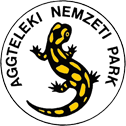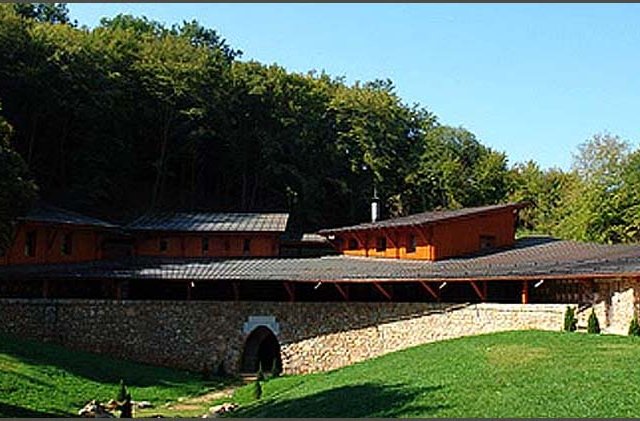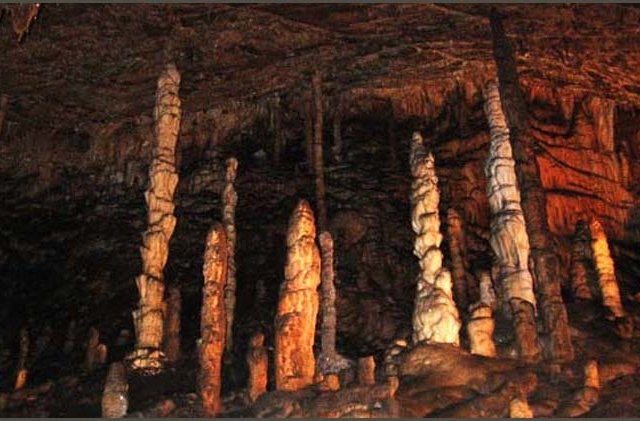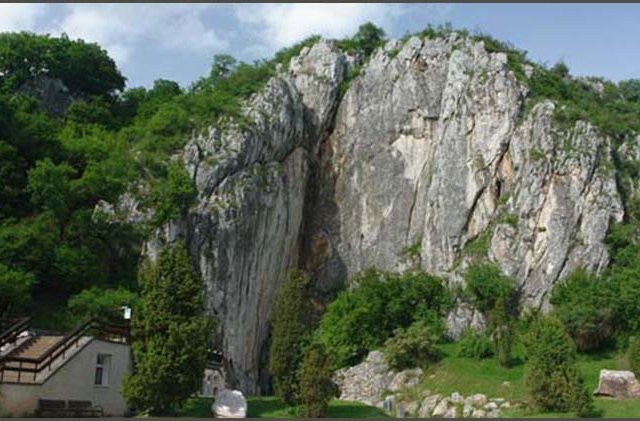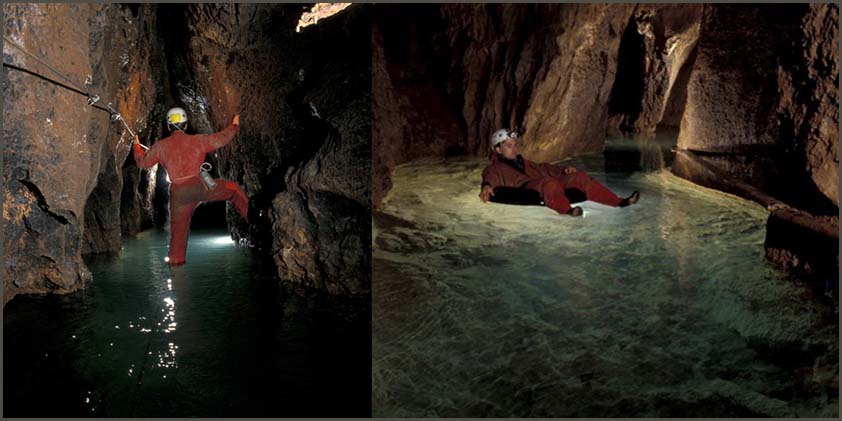
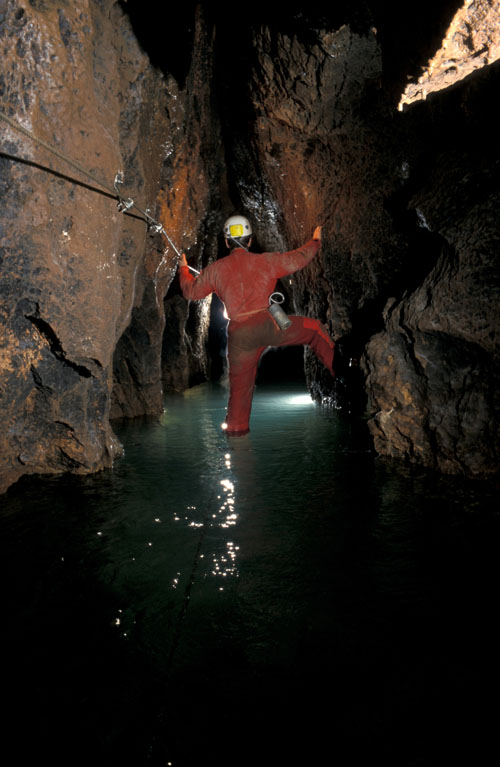
The Kossuth Cave
Discovery and Exploration
The Kossuth Cave is located at an altitude of 220m above sea-level north of the picturesque, fairy-tale village of Jósvafő and just behind the Nagy-Tohony Spring Valley (previously known as Mill Spring Valley).
In 1933, Hubert Kessler suspected a large cave system when he recognised clouds of vapour being emitted above a vent in winter (this vent was filled in during road repairs in the 1960s). With the assistance of members of the Budapest University Tourist Association, Kessler attempted to break through into the suspected cavern system but they were not successful. Kessler and Rádai did manage to locate the end of a siphon, and after several attempts, established the direction of the route. However, with only rudimentary equipment, they were not able to venture into the narrow crevice. Attempts to use explosives only backfired, as debris then partially clogged and narrowed the siphon further.
From the late 1950s on, the nearby Vass Imre Cave Karst Research Station and Ferenc Papp (then ÉKMEO) Cave Research Team continued the exploration and examination of the cave. These two groups worked in parallel with the Amphora Diving Club who were concentrating their efforts on the “Hopeless Siphon.” Unfortunately, debris from Kessler’s experiments with explosives effectively blocked the best efforts of the divers. On the other hand, Amphora did discover a useable route through a 50 m long 22 m deep swimmable 35 degree gradient siphon entrance.
Disaster struck in 1974 when the first 50 meters of the entrance tunnel collapsed. Furthermore, high floods in 1970 and 1974 filled the area with a significant amount of clay. As a result, the tunnel became dangerous and impassable. It was only in 1988, after several reconstruction efforts, István Szenthe of the Myotis Cave Research Group was eventually able to re-open the cave entrance under financial cover of a nature conservation programme.
Also in 1988, the Hungarian Karst and Cave Research Association (MKBT) decided to make entrance through the “Hopeless Siphon” into the now named “Kossuth Cave System” their main priority. Expectations for greater commitment and success were not met; however, they did finally overcome the debris obstacle in the first section. In fact, they broke through on the final day of their work camp. The expanded, 9 m deep route turns right after a constriction, then makes a right angle down a 40-45 degree slope. After about 15 m, the gradient gradually decreases, and at 22 m becomes almost horizontal. Fifty meters along the horizontal section, overhanging rocks prevent further access.
On New Year’s Eve 1995-96, Ferenc Papp and a group of young members of MKBT discovered what later became known as "The Three Kings Branch." This 120 m long highly flood-prone route was later investigated in 1997 by BEAC researchers, who made a very detailed and accurate map. What was previously thought to be an 800 m cave, turned out to be 1410 m with a gradient of 57 m. Later in 1997, with this ray of hope, the BEAC and the MAFC organised a joint research camp to explore the Kossuth Cave and the now almost legendary siphon. The siphon was again the target. The István Plózer Underwater Cave Research Group trained for months before the expedition. Following decades of disappointment, with newly specialised equipment, Attila Sári and Zoltán Szabó succeeded in penetrating the 30cm high narrow passage on July 8, 1997. Beyond the entrance, they encountered a nearly 80 m long spacious corridor and 32 m deep crevice which eventually met a crossroad. Participants of the work camp moored a 130m long line, and working in two shifts, they cleared the upper branch of the siphon.
The drilling and clearing work progressed well until about 6-7 meters away from the suspected Patakos Branch, researcher Zoltán Kominka broke through and suffered a fatal fall. As a result, the participants later devoted their energies to a cave rescue service. In the 2000s, the Amphora Diving Club’s members began intense study of the siphon, and thanks to their systematic research, the “Hopeless Siphon” was conquered and further discoveries were made possible, such as the “Hall of Our Fathers.” Investigations for unknown areas to the complex continue to this day.
Natural Wonders
This active-spring type cave was formed in Wetterstein Middle Triassic limestone. Dolomite is manifested at some places around the catchment area, which the Research Station estimates to be around 24.4 km2. The passages of the cave, typically in a NE-E direction, are drawn parallel to the dry, craggy, washed-out branch-ravine, easily observable on the surface, and beneath it. The relationship between these two elements is unclear. From the entrance, one follows the 180 m long dry corridor, and after some sliding and climbing, one arrives at the cavern stream and route towards the spring. Water from periodic flooding or siphon eruptions is unable to drain from the system.
During large floods, the water level in the cave rises spectacularly and escapes through the much higher cave entrance. In these instances, certain sections, such as the Three Kings Branch, are completely under water. Following the stream leads to a 50 m long swollen lake. Typical of the whole cave, narrow, the oblique fracture-driven walls are decorated with speleothems. Above the Main Branch, there is a 300 m long section richly embellished with dripstones and pea stones. This upper section connects at several points with the Main Branch.
The dry upper passages beyond the clay filled branches lead to areas of surprisingly rich and ornate formations stretching into a bifurcated region, and gradually flattening out into sealed in clay filled endpoints. The Research Station’s lithological http://en.wikipedia.org/wiki/Lithology mapping has shown that the cave ends in a fault zone filled with at least 50 m thick Lower Triassic impermeable shale.
Hydrological Information
The Nagy-Tohonya Spring, after the Jósva, is not only the second largest spring in terms of water supply, but also exhibits some strange behaviour. Oddly, Jósvafő villagers reported that the water is much warmer in winter than in summer. Kessler, acting as the VITUKI karst research group's chief engineer in 1956, used the opportunity to take measurements when he was assigned to deal with the water supply for Rudbanya. He documented water temperatures of 11° C in summer seasons and 16° C in winter. The water of Nagy-Tohonya mixes with waters of the deep-karst, resulting in a much warmer spring than the surrounding water entities. Moreover, its connection with six surface sinkholes has been confirmed (Horse Head Spring, Hazelnut Well, Liar’s Well, Kuriszlán Valley, Gergés Shovels, Mogyoróstöbri Gully). The Research Station’s 30 years of measurements has documented the water yield varying between 1000 and 68400 litres/minute (264 – 18070 gallons), and an average yield of 6607 litres/minute (1745 gallons). The change in water discharge is not only influenced by the quantity of rainwater, but also by other phenomena like fluctuation in air temperature, tides, earthquakes, air-pressure, and even the compression waves from the Horse Head Spring siphon. The other strange behaviour is that the Nagy-Tohonya, like the Jósva, periodically radically increases its flow, only to decrease to normal levels after a few hours. Kessler interpreted this as a siphon-related phenomenon.
Flora and Fauna
We know comparatively little about the flora and fauna of the cave. Insects of the Coleoptera (beetles), Diptera (flies) and Acaridea (mites) species have been observed, as well as vertebrates like the lesser horseshoe bat (Rhinolophus hipposideros) and the greater horseshoe bat (Rhinolophus ferrumequinum). One of the main curiosities of the cave is the living Lepthotrix (a sheathed filamentous bacterium) http://microbewiki.kenyon.edu/index.php/Leptothrix bacteria-coat covering the walls of the cave, making the routes seem extraordinary black.
(ANPI archive: Csaba Egri)
